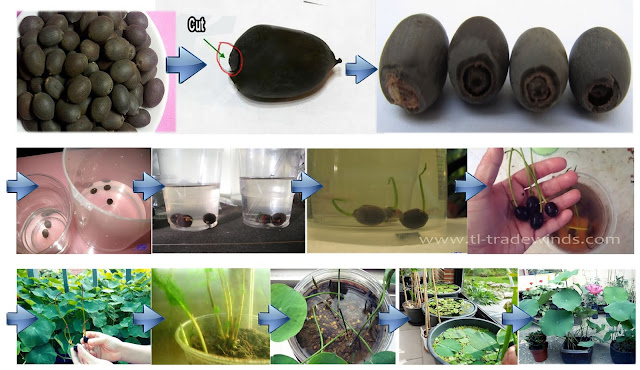In the world of flowering aquatic plants, nothing beats a water lily or a lotus flower.
You probably are already aware of the similarities between water lilies and lotus plants, so let’s get down to the differences.
The biggest difference is that water lilies (Nymphaea species) leaves and flowers both float on the water’s surface while lotus (Nelumbo species) leaves and flowers are emergent, or rise above the water’s surface. There is one exception: tropical water lilies leaves float on the surface just like hardy lilies but their flowers rise above the surface of the water about 6-8 inches.
Both water lilies and lotus have dwarf varieties which are perfect for container patio ponds, and in some cases small enough for patio tabletop bowls.
A standard lotus will eventually grow to have it’s leaves and flowers 4-6 ft. above the water, maybe less in a container where their size is more controlled. Dwarf varieties will be just a few inches above the water.
Lotus plants will also need more fertilizer than water lilies.
There is a height and size difference also. A standard lotus flower is larger than a water lily flower, reaching up to one foot across (about 30.5 cm.). A full-sized lotus plant’s foliage and flowers can reach up to 60 inches (152 cm.) above the water.
Other Differences
Most varieties of water lily have to variegation or coloration besides green on their foliage but some do. Most ‘variegated’ varieties have green leaves mottled with a dark purple or are completely dark purple. Most are the tropical types of water lilies.
When it comes to lotus on the other hand, I don’t believe there are any variegated varieties, at least that I know of. So when it comes to color, it’s all in the flowers when growing lotus.
Some Varieties We Suggest
Hardy Water Lilies: (Nymphaea)
- Nymphea ‘Blue Aster’ is a standard sized water lily with light blue flowers and green and purple variegated foliage. A good choice for larger containers.
- Nymphea ‘Helvola’ is a day flowering miniature water lily with light yellow flowers.
Tropical Water Lilies:
- Nymphea ‘Tropic Sunset’ is a standard sized day blooming tropical water lily having red and green variegated leaves and flowers with bright yellow stamens and bright pink pedals.
Lotus: (Nelumbo)
- Nelumbo ‘Bali Red’ is a medium sized lotus plant that can reach 3-4 ft. out of the water and has beautiful flowers that range from pink to red.



























